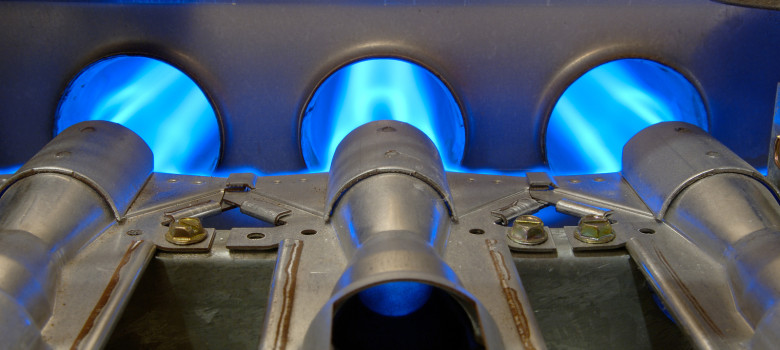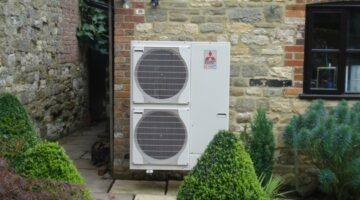
I was thinking recently about how other countries heat their homes. What methods they use, and why, and what the cost differences were. It’s interesting, because we have a real problem with the cost of heating our homes in the UK, so why are other countries so different?
What do we use to heat our homes?
In the US, around 50% of properties are heated with natural gas, whilst around a third are heated with electricity. There are also a smaller percentage of oil and biomass, making up 12% of the market. Only 15% of the UK does not have access to mains gas, which means the UK has a much higher level of grid connected homes. Most homes on the gas grid utilise gas boilers with a central heating system, whilst most off grid homes use electricity.
These figures aren’t particularly different, but the key difference comes when we look at the method of heating. This shows a drastic difference, with the vast majority of US homes being heated with a warm air system of some kind. Whether the method is a gas or oil fired furnace, heating air which is pumped around the house, or if it is an electric air source heat pump, converting electricity to warm air and ducting that around the house, the most common method of heating in the States is a ducted warm air system.
The UK is of course very different. Whilst offices might use ducted heating, the vast majority of homes use a boiler heating water, which is then moved around the house to heat radiators. There are obviously exceptions, but it is interesting to see such a huge disparity between two modern western countries.
How much do utilities cost?
The first clue as to why someone would choose one heating method over another is the cost of fuel. The two key ones in the UK are electricity and natural gas.
| UK | US | |
| Electricity | $0.22/kwh | $0.08 to $0.17/kwh |
| Gas | $0.074/kwh | $0.032/kwh |
All this tells us however is that the US has cheaper fuel. Electricity and gas are both around half the price in the US, and this on its own does not really give us an idea as to why one method predominates.
More off-grid properties
The US is a big country, with a lot of smaller rural communities dotted across the map. This means that there is a smaller percentage of properties on the gas grid when compared to the UK. It therefore follows that there will be more off grid properties, and more properties using de-centralised heating methods, like biomass for example. With less properties on the gas grid, it makes sense that there will be slightly more homes heating with electricity, because the electricity grid is much more extensive.
 Big temperature differences
Big temperature differences
America is a country of temperature extremes, both regionally and seasonally. Big seasonal variations mean that having a heating system that can also cool the property is going to be a big advantage. In the winter a heat pump can warm a property, and in the summer they can be used to cool. Heat pumps are really efficient at doing this, so you will find that in the warmer parts of the US, these sorts of system are commonplace.
In cooler parts of the US, in some of the northern states, heat pumps just won’t work in winter, at least not in any reasonable efficiency. Temperatures can reach -20 degrees or more, and at this sort of temperature heat pumps are really inefficient.
Here, a warm air furnace is preferred, utilising either gas, oil or wood. These are good ways to heat the home in cold climates because of the high temperatures at which they operate.
Space requirements
Space is at a premium in the UK. Especially in towns, every square meter costs a small fortune, so it is really in our interest to keep heating systems as small as possible. This means compact combi boilers, and slimline electric heaters.
Whilst this is also the case in dense urban centres in the US, even in suburban areas, homes tend to be more spaced out, and therefore have plenty of room for the heating system. Homes have room for ducting and big furnace heating systems. There is also more space to store biomass fuel and oil, which contributes to more than 1 in 9 US homes using wood or oil fuel.
US vs. UK
So there are some key things to come out of this. In the States we see a slightly more decentralised system, leading to more wood and oil fuel use, a greater use of warm air heating and many more heat pumps than in the UK. Over on our side of the pond, we see a predominantly gas boiler and static electric heating systems, focussing on space restrictions and heating rather than cooling.
Think we missed something? Do you have a different opinion?
Comment below to get your voice heard…












Good info – thanks! I live in America, in an “old” house (~1940 built) with radiant floor heating (hot water goes through copper tubes in the cement foundation/floor).
I’m not so sure that gas versus electric has that much effect on whether people use boilers or not. I would say that the two main factors are:
– Age of housing: Newer houses are almost all forced air, from what I’ve seen. I’m not sure what systems the UK uses for dispersing the heat from the hot water through the house, but radiant floor heating like mine is rare. Mine limits my house to a single floor; most people want multi-floor houses.
– Need for A/C: You hit the nail on the head here. Almost everybody has air conditioning, which requires a forced air system throughout the house. Once you have that, it seems logical to handle the heating the same way.
That being said, I love my radiant floor house! So much better than alternating hot and cold air, and the noise associated with it. I’m one of the luck ones.
The homes in England are old sometimes large with tall ceiling and poorly insulated with a greater heat loss and a boiler with cast iron radiators works well to heat the home without large temperature swings. The US has fewer old homes , and the newer homes are designed for forced air, for heating and air conditioning with lower ceilings and good insulation temperature swings are not a problem and it makes air conditioning affordable.
There is an increasing trend in the UK for rural properties to burn wood as their primary source of heating with an oil-fired backup/hot water system. In my part of the world (rural Herefordshire, UK) the vast majority of properties have a 1-tonne kerosene tank which runs a water boiler with a wood-burning stove/range-style cooker in the kitchen for heat. It’s also becoming common for properties with wood stoves to have them hooked into the hot water system so that they can run radiators in different parts of the property.
Gas central heating is common in the UK, as mentioned. Gas is much cheaper then electric heating, due to the cost per kw/h. Even in the countryside oil central heating is mainly used. Only difference is the oil is stored in a large tank until needed. The gas or oil then heats water, and is pumped through radiators.
As you said, about aircon is not really needed in the UK, so most people go for gas and radiators central heating. When I stayed in a hotel in San Francisco, the hotel had large old fashioned radiators in the rooms! I guess San Francisco has similar weather to the UK, as is next to the seas with prevailing winds off it. So no need for aircon just heating.
I’m still curious after reading the article and reviewing the comments, as to how the energy cap would be set at $5000. That would mean that heating their homes would be around $800 a month. How is that possible? Even when we lived in Wisconsin where the weather is much colder than the UK and had a 2800 sq ft home, our bills for gas were only between $200 – $300 a month. Why is there such a difference?
I lived in a colder climate, New Jersey, and the house was 100+ years old. I loved the steam radiators and my skin was always soft and moist. In the short summer a window AC cooled the bedroom and dropped to ground floor. When I moved south I got a heat pump forced air and I hate it! When its rarely cold we freeze and in the summer we suffer allergies from dust and mold! I miss my radiators. (Oil burner)